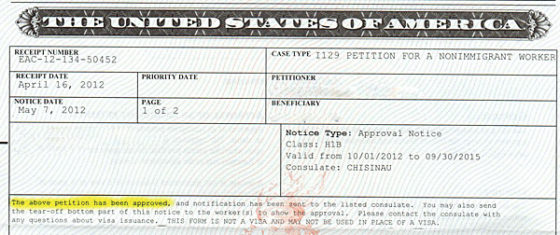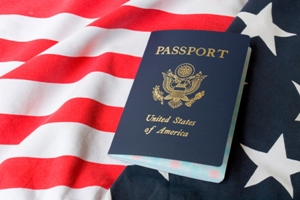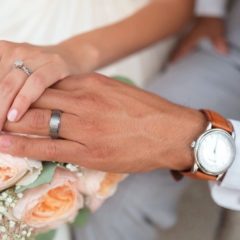 Probably many of us once in life thought about working abroad. After all, foreign countries, especially the United States, attract us by good working conditions, a decent salary and prospects of growth. Who else but the Americans know what is to work hard, overtime on two or even three jobs in order to be able to earn good money, support the family, to travel and to live happily. United States is a country of vast opportunities and prospects, the country in which you can develop and create yourself! America likes business and self-motivated people, and such people made this country. Therefore, each year the United States produces 65,000 visas to people wishing to live and work in America.
Probably many of us once in life thought about working abroad. After all, foreign countries, especially the United States, attract us by good working conditions, a decent salary and prospects of growth. Who else but the Americans know what is to work hard, overtime on two or even three jobs in order to be able to earn good money, support the family, to travel and to live happily. United States is a country of vast opportunities and prospects, the country in which you can develop and create yourself! America likes business and self-motivated people, and such people made this country. Therefore, each year the United States produces 65,000 visas to people wishing to live and work in America.
In order to be able to work and realize itself in the United States, you need to have H-1B work visa. Lets look briefly and generally about the U.S. visas. There are several types of visas depending on the purpose or type of travel and in general visas are divided in two main groups: immigrant visas (to immigrate and live in the U.S.) and non-immigrant visas (for temporary travel to the U.S.). Immigrant visas are visas that allow you to travel to live permanently in the United States and are also known as “Green Card” or “Permanent Residence”, then the other type are the non-immigrant visas that are more commonly known just as visas in general. The non-immigrant visas don’t give you the right to stay permanently in the U.S., they are issued for the purpose of one or multiple temporary short trips to travel as a visitor to the United States. H-1B visa is a type of non-immigrant visa and it is designed for professional workers on specialized careers (accounting, computer analysts, programmers, doctors etc.). The work visa allows you to travel to work and live in the U.S. permanently for a certain period of time, up to 3 years, but may be extended up to 6 years. One of the advantages of this work visa is that it is possible to change your worker visa status and apply for a Green Card through your employment in the United States.
Oleg from Moldova talks about his experience of getting H1B visa.
“I found the employer in August 2011. After the “test” month, we signed a contract and started to prepare documents for submission of the petition. I made, transferred and pledged all the necessary documents and sent them to the employer, and started waiting. I thought it was not too long. The employer has made all the necessary arrangements and assurances, and by 1 November (in two months the documents were ready!) we’re ready to apply for the main petition. A week later, the petition came back – something not correct. We sent again. A week later came back again – we didn’t know what is the problem! We sent a third time and on 23rd November petition finally got where it is necessary. But, as ill luck would have it, exactly on 23rd November a limit of 65,000 annual visas finished. That day! I was already mentally in America! I already knew where I would arrive (I expected to fly after the new year), what kind of things to bring. Fortunately, I was in good standing with my employer. So we decided to wait the 1st April, and to submit the petition again.
It lasted for many months of waiting. I learned English, I tried not to lose precious time. By April 1, my wife and I prepared all the documents, the two petitions were filled and carefully checked. Since we paid for expedited review, our petitions were approved in two weeks!
A week later the boss sent us via DHL all the documents, including the most important thing – the notification I-797. This notification is the evidence of the consent of the USCIS and our permit to the U.S. Embassy. On the site of the U.S. Embassy, we have filled the petitions for visas, appointed interview date (June 12). The idea is that the embassy should just check all the documents, take payment and put a visa. All the documents have already been approved, and the decision has been made. But we sent electronic copies. Suddenly I have a fake diploma ? This is also the task of the embassy employee – to recheck carefully the originals of all the documents in order to compare your face with a photo, take your fingerprints. If, for example, any document will cause him suspect, the officer can refuse a visa. Even if the employee is just in a bad mood when he got up in the morning, if he/she does not like your hairstyle, he/ she can refuse you, and nothing has to be done!
At the embassy we were lucky, and we were called simultaneously, to the U.S. and English-speaking employee of the Embassy! Apparently, they saw that we are a family and decided to deal with both at once. Keep yourself calm, look straight, respond well, be confident – here are the basic tips that helped me. Questions were quite ordinary. It helped that my wife and I went to the same university, worked in the same company, and now we go to work together – and, again, in the same company! This caused a worker even laugh and she said: “everything is clear with you!” 🙂
How nice it was to hear the last “golden words”: your visas have been approved! And the next day at 9:00 am we have already our passports with visas! “
The process of obtaining H1B visa is not difficult, but it is important to carefully and correctly fill out forms, petitions, and pay fees. To learn more about the process of obtaining a work visa, visit http://www.usimmigrationapplication.org/visas/h1b-work-visa









